2003 Toyota Celica Repair, Service & Tires
Get Started
Complete Auto Care for Your 2003 Toyota Celica
-
TIRES FOR YOUR 2003 Toyota Celica View Tire Info GET TIRE PRICING
-
REPAIR FOR YOUR 2003 Toyota Celica View Repair Info SCHEDULE REPAIR
-
MAINTENANCE FOR YOUR 2003 Toyota Celica View Maintenance Info SCHEDULE MAINTENANCE
-
OFFERS FOR YOUR 2003 Toyota Celica Limited Time Tire Offers VIEW ALL COUPONS
2003 Toyota Celica Tires
Recommended Tires | Tire Information
2003 Toyota Celica Tires Sizes, Speed Ratings, and Inflation
Not sure about your 2003 Toyota Celica tire size? Use the following chart to find information on tire size, speed rating, and inflation.
| Trim Level | Speed Rating | Inflation in PSI F/R | Tire Size |
|---|---|---|---|
| 2003 Toyota Celica GTS* | V | 32 PSI/32 PSI | P205/55R15 |
| 2003 Toyota Celica GTS* | V | 32 PSI/32 PSI | 205/50R16 |
| 2003 Toyota Celica GT | H | 29 PSI/29 PSI | P195/60R15 |
|
2003 Toyota Celica GTS* Speed Rating: V Inflation F/R: 32 PSI/32 PSI |
|
2003 Toyota Celica GTS* Speed Rating: V Inflation F/R: 32 PSI/32 PSI |
|
2003 Toyota Celica GT Speed Rating: H Inflation F/R: 29 PSI/29 PSI |
* Note: these models have different tire sizes depending on vehicle options.
Recommended Tires for Your 2003 Toyota Celica
What tires are best for a 2003 Toyota Celica? Check out the following tire brands and types.
 Potenza RE71RS
Potenza RE71RS
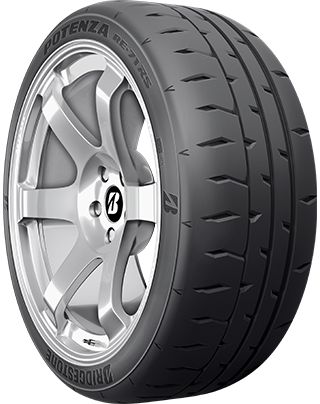
- No warranty
- Summer
- Performance
 Ecopia EP422 Plus
Ecopia EP422 Plus
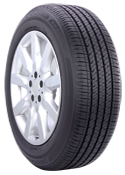
- Platinum Pact Limited Warranty
- All-Season
- Performance
 ALL SEASON
ALL SEASON
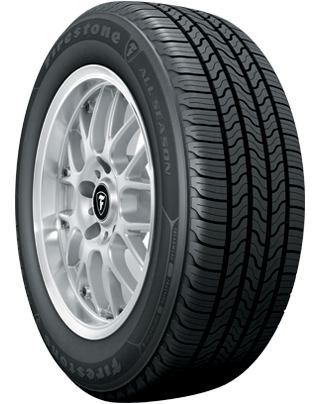
- No warranty
- All-Season
- Passenger Tires
 Firehawk Indy 500
Firehawk Indy 500
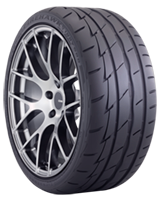
- Gold Pledge Limited Warranty
- Summer
- Performance
 WEATHERGRIP
WEATHERGRIP
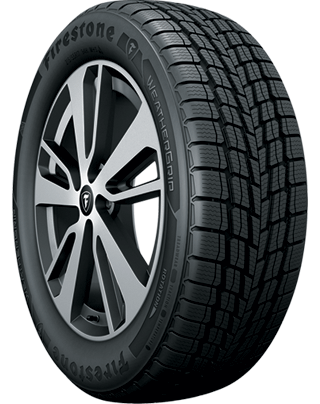
- No warranty
- All-Season
- Passenger Tires
 Winterforce 2
Winterforce 2
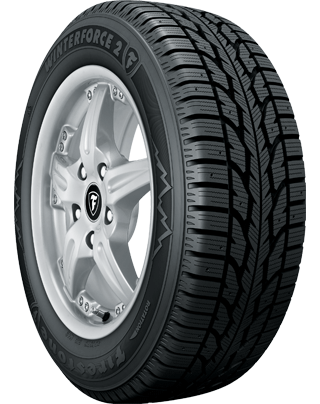
- No warranty
- Winter
- Winter
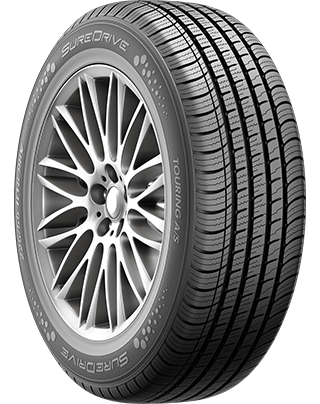
- No warranty
- All-Season
- Passenger Tires
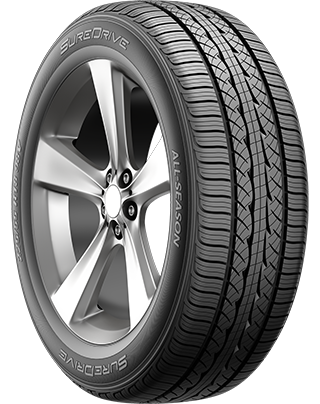
- No warranty
- All-Season
- Passenger Tires
 PROXES R1R
PROXES R1R
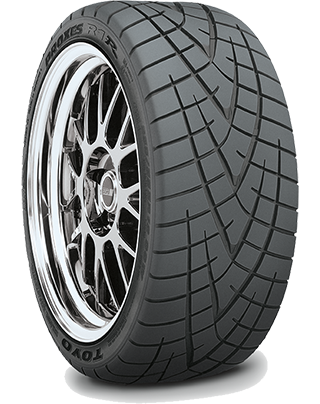
- No warranty
- Summer
- Performance
 PROXES Sport A/S
PROXES Sport A/S
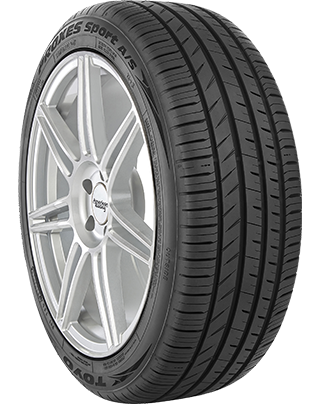
- No warranty
- All-Season
- Performance
 Extensa A/S II
Extensa A/S II
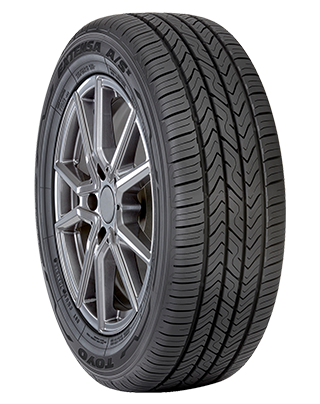
- No warranty
- All-Season
- Passenger Tires
About 2003 Toyota Celica Tires
Beyond the correct tire size, you also want to consider a handful of other factors when buying new Toyota Celica tires like where and how you drive, and what tire brand you trust most. When evaluating your driving conditions, think about where you live (countryside vs. city vs. mountains) and the kind of unexpected weather you're likely to experience. Many drivers who live in states that experience all four seasons choose to purchase two sets of tires: one for winter and one for summer. Other drivers prefer to purchase one all-season set to limit trips to the tire shop and make sure their vehicle is prepared in the rain, sleet, snow, or sun!
Next, consider your driving style. If you're a big off-roading fan who forges paths where others can't, you have very different needs than a long-distance commuter who sticks to the highway. Talk to a tire technician at Firestone Complete Auto Care for help choosing the best tire for you, or start shopping for Toyota Celica tires online.
Installing Toyota Celica Tires
Firestone Complete Auto Care has been a leading tire provider for more than a century. We're a tire store that also offers professional tire installation, maintenance, and rotation, along with complete auto care. We make it easy to buy new 2003 Toyota Celica tires online and book an installation appointment at the same time.
2003 Toyota Celica Tire Questions
-
Why check Toyota tire inflation? The right tire pressure can make all the difference. Proper tire inflation helps increase fuel economy, improve braking time, and boost tire lifespan! Even a small change in tire pressure can impact your driving.
-
What do the numbers on my Toyota Celica tires mean? Your tire sidewall numbers tell you the recommended load carrying capacity, speed rating, treadwear, traction, and tire size. Talk to a tire technician to learn how to read Toyota tire numbers.
-
How do I check the tread depth on my Toyota tires? Stay on top of your tire tread depth to help avoid a dangerous drive. You can check tread depth with a penny. Hold the penny so that Abraham Lincoln is facing you, then place your penny into a tread groove upside down. If you can see the top of Abe’s head, your tread is shallow and it might be time for new Toyota Celica tires. Grab a penny. Hold the so that Abe Lincon's head is facing you and his hair is pointing toward the ground. Then, place the penny into a tread groove. If you can see the top of Abe’s head, your tread is shallow and it might be time for new Toyota Celica tires.
Types of 2003 Toyota Celica Repairs
Want more details? Choose a service below to read more about Toyota Celica repairs at Firestone Complete Auto Care.
Get Repairs for Your 2003 Toyota Celica
Car repairs: for many drivers, that phrase is a dreadful one. But we work to provide you with a different experience at Firestone Complete Auto Care. Bring your 2003 Toyota Celica in for repair services and our skilled repair technicians will get your Celica back on the road. We’ll start by assessing what repairs may be needed, and we’ll provide you with a detailed explanation of what we recommend. We’ll never recommend a repair we don’t think is necessary for your safety or the performance of your Toyota.
How Much Are Toyota Celica Repairs?
The cost to repair your 2003 Toyota Celica depends on the type of repair, costs of replacement parts or repair supplies, how much labor the repair will take, and the state you live in. They're updated regularly!
A few different aspects can influence repair costs for your 2003 Toyota Celica, like
2003 Toyota Celica Auto Repair Q&A
-
Do I need to follow Toyota's maintenance schedule? Don’t neglect scheduled maintenance. Sure, you could skip out on a few recommended maintenance services, but you may pay the price later. Bring your vehicle to Firestone Complete Auto Care at recommended service intervals to address minor issues before they get out of hand and keep your car running newer, longer.
-
Should I bring my Toyota in even if I can't pinpoint the problem? You know your vehicle. You also know when something feels 'off' with your vehicle. Pay attention when things don't run like they used to and stop by for a Courtesy Check when you notice an unusual sign, smell, or sensation. We might be able to help you prevent Toyota Celica repairs!
-
Why do you recommend certain repairs for my Toyota? Talk to your technician. We'll never recommend a service or repair for your 2003 Toyota Celica that we don't think is necessary for your safety.
2003 Toyota Celica Brake Repair
Your Toyota Celica engine may be strong and reliable. But if you can't stop it, then it's scrap metal. If you notice your brakes are squeaking or not working well, don’t wait! Unresponsive brakes make it tough to give the road your best. Plus, ignoring your brake problems can result in more damage and higher brake repair bills. Get your 2003 Toyota Celica brakes fixed at Firestone Complete Auto Care. We offer a variety of brake services like brake pad/shoe removal and replacement, brake rotor/drum refinishing, brake fluid exchange, and wheel cylinder and brake caliper installation.
Questions About Your Toyota Celica Brakes
-
Why does my Celica shake when I brake? Feeling shaking or vibrating in your Celica as you brake might indicate a few different problems, including worn brake pads or rotors, loose suspension components, damaged brake calipers, or warped rotors. Book an appointment for a free brake inspection as soon as you notice a problem with your brakes.
-
What is the average lifespan of Celica brake pads? Brake pads generally last between 30,000 and 40,000 miles. Your driving can affect how long your Celica brake pads last, though. For example, mainly driving on highways and gradually braking can help increase the lifespan of your brake pads, and carrying hefty loads or riding your brakes can shorten it.
-
Should my Celica be leaking brake fluid when the car is off? Your Celica has a closed hydraulic brake system, meaning you should not have a brake fluid leak under normal conditions. However, parts of your brake system can wear out over time or become damaged, which can lead to a brake fluid leak.
Repairing Your Toyota Celica Drivetrain
Drivetrains for front, rear, and all-wheel-drive and 4WD vehicles are quite different, so you don't want to go to just anyone for drivetrain repair. You want to go to Firestone Complete Auto Care. We can fix many 2003 Toyota Celica drivetrain components Your Celica might need driveshaft repair if you notice vibration as your vehicle accelerates, clunks when shifting, heavy vibrations in your floorboards, or resistance when turning.
2003 Toyota Celica Drivetrain Q&A
-
What are signs my Toyota drivetrain is damaged? Hear noises toward the back of your Toyota Celica? See fluid leaking? Having issues turning? These could all be signs of drivetrain damage you don't want to ignore. Take action quickly to catch repairs or replacements before something more severe happens.
-
Why is my Celica malfunction indicator light (MIL) on? Engine problems, transmission problems, faulty sensors, electrical issues, misfire issues, and connector problems could all cause your Celica’s malfunction warning light, or better known as the check engine light, to illuminate.
-
How concerning is a drivetrain malfunction in my Celica? If you experience a drivetrain malfunction in your Celica, it is important to have it inspected by a professional mechanic as soon as possible to identify the underlying cause and perform the necessary repairs. Driving with a malfunctioning drivetrain can be dangerous and cause further damage to your car.
2003 Toyota Celica Alignment Services
With an alignment service, adjustments are made to your Toyota Celica’s suspension system, the connection between the vehicle and the wheels. In an alignment service, calculated changes are made to the angles of your tires. This is so that your tires hit the road at an optimal angle for your vehicle’s performance — just as Toyota intended. Before we adjust the alignment of your 2003 Toyota Celica, we’ll start by checking the current alignment angles. Then, we’ll adjust the angles as needed until they match recommended measurements from Toyota.
Toyota Celica Alignment Questions
-
How can I avoid knocking my Toyota Celica out of alignment? Hitting a pothole or curb can alter your wheel alignment. So can general wear and tear over time.
-
How often should you get a wheel alignment for your Celica? Typically, your alignment should be checked every 6,000 miles or 6 months, whichever comes first. Double-check your Celica owner’s manual for Toyota's exact recommended schedule.
-
Does getting new Celica tires mean you need an alignment? While you don’t necessarily need to get an alignment when putting new tires on your Celica, it’s still a good idea. Ensuring your wheels are properly aligned can help support optimal handling, tire wear, and fuel efficiency.
Engine Repairs for Your 2003 Toyota Celica
When your Toyota Celica engine needs repairs, our expert techs will let you know what needs to be done and why before they get started. We never do any work without your sign-off. If a repair isn’t urgent right now, we’ll let you know. If it's necessary for your safety, we'll make sure you understand that, too. We want to provide you with the information you need to make an informed engine repair decision. Choose Firestone Complete Auto Care for Toyota Celica engine repairs and you can feel good knowing that we only use Toyota-compliant replacement parts such as the cambelt, valve guide seal, fuses, or other parts.
2003 Toyota Celica Engine Q&A
-
Why does the check engine light in my Celica turn on when I start my car? It’s usually normal for your check engine light to turn on upon ignition. This is just your Celica testing its circuits. The dash light shouldn't stay on. If it does, you might want to bring your vehicle in for service.
-
Why is my Toyota Celica making engine noise? Strange engine sounds can be a sign something’s off in your Toyota Celica. Knocking or tapping could be a symptom of low oil. A high-pitched whistle could signal an intake leak or misaligned belt. Squealing can be traced back to a loose fan belt, and grinding might be a sign of brake problems rather than engine issues.
-
What could damage a Toyota engine? Some driving habits are not so great for your engine. These include driving on a near-empty gas tank, flooring the gas pedal while the car is in Park, or accelerating too quickly, too soon. Protect your engine’s performance and efficiency by distancing yourself from these habits.
Tire Repair for Your 2003 Toyota Celica
If the road has been rough on your 2003 Toyota Celica tires, Firestone Complete Auto Care can help. In some cases, a tire doesn’t have to be replaced – it can be plugged and patched with a simple repair. Depending on the damage, though, a repair might not be the right move. Our technicians can determine which option is best for your situation. We’ll begin by taking a look at where the damage is, the type and extent of the tire damage, and how all of your tires are wearing.
If a repair on your 2003 Toyota Celica tire is feasible and safe, the repair process is actually fairly simple: (1) Separate the tire from the vehicle wheel, (2) fill the puncture to keep the moisture out, and (3) secure and seal the inner tire liner to ensure the tire is airtight.
Frequently Asked Toyota Celica Tire Repair Questions
-
How soon should I have my flat tire repaired? Driving on a flat or underinflated tire can put extra stress on your wheels and alignment. While it’s sometimes necessary to drive a short distance on a flat tire to get to a safe place, don’t take any other trips in your Celica until you can have the flat tire repaired or replaced.
-
Is temporary sealant bad for my Toyota's tires? A temporary sealant may be able to help you get to a repair location safely. But temporary or emergency sealants could possibly damage TPMS sensors, and in some cases may even void the warranty on your Bridgestone or Firestone tires. If your tire needs extensive repair, sealant can add time and labor costs to the process.
-
What is causing the tires on my Celica to keep losing air? Possible reasons for your Celica tires continuously losing air include a leaking valve steam, wheel damage, and a puncture or hole in the rubber.
2003 Toyota Celica Maintenance
You want your Toyota Celica to last as long as possible. If you put in the effort to keep up with proper maintenance, you could hit 200,000 miles (or beyond!) in your Celica.
About 2003 Toyota Celica Scheduled Maintenance
Instead of waiting for an issue to arise with your Celica, you can stay ahead of problems before they even begin. Just follow your 2003 Toyota Celica maintenance schedule! Toyota knows your vehicle inside and out (they made it, after all!), so they’ve designed this schedule with your car’s unique needs in mind. Driving conditions, climate variations, and other variables can affect which scheduled maintenance services you’ll need; in most cases, though, recommended maintenance will consist of services like tire rotations, vital fluid checks/exchanges, filter changes, brake pad replacement, and oil changes. Staying on track with routine service appointments can help your Celica perform better, keep you safer on the road, and prevent common 2003 Toyota Celica problems.
Overview of Essential Toyota Celica Maintenance Needs
Come to Firestone Complete Auto Care for manufacturer-recommended routine maintenance on your 2003 Toyota Celica and an expert technician will begin by performing a Courtesy Check. The Courtesy Check helps us see what we’re working with under the hood, and allows us to alert you to any potential problems before they worsen. Each Courtesy Check includes a free battery test and an inspection of your Celica's windshield wiper blades, head and tail lights, filters, fluid levels, tires, and alignment.
Firestone Complete Auto Care is your one-stop shop for 2003 Toyota Celica maintenance and repairs. We can help you keep your vehicle (and your life!) running smoothly. Many of our locations have weekend and evening hours for your convenience.
2003 Toyota Celica Maintenance Questions
-
When should I have Toyota Celica alignment checked? You know your Toyota Celica better than anyone else, so you’ll know if something doesn’t feel right while driving. Have your alignment checked (and adjusted if necessary) as soon as you notice a pulling steering wheel to prevent suspension damage or uneven tire wear.
-
When should I switch my Toyota Celica to high mileage oil? Do you have more than 75,000 miles on your Toyota Celica? If so, request to switch to high mileage oil at your next oil change. This type of oil is specially formulated to keep aging engine parts in the best possible condition.
-
Can I ignore dashboard lights on my Toyota? Don't ignore dashboard warning lights! Bring your Toyota Celica in for a diagnostic code scan as soon as a dashboard warning light flashes on, whether it's your check engine or battery light. Dashboard lights alert you to trouble under the hood.
2003 Toyota Celica Battery Replacement & Size
Need more info about Toyota Celica batteries?
| Battery | Engine | Warranty | Cold Cranking Amps | |
|---|---|---|---|---|
| 35-1 | L4/1.8L | Replacement 24 months | Performance months | 500 |
| 35-2 | L4/1.8L | Replacement 36 months | Performance months | 640 |
| 35-AGM | L4/1.8L | Replacement 36 months | Performance months | 650 |
2003 Toyota Celica Car Batteries
Generally, car batteries last from three to five years. Don’t get stranded by your Celica’s car battery. Replace it regularly instead! Look out for symptoms of a faulty car battery. A slow engine crank, an illuminated check engine light or battery signal, bloated battery case, corroded battery posts, or weak lights can all be signs that your battery needs attention.
Or, you can get a complimentary battery check at your nearest Firestone Complete Auto Care. Drop in for a free battery check and, if needed, a replacement battery for your 2003 Toyota Celica. Car batteries are only one of our many strong suits. Our technicians are well-acquainted with Toyota’s service specs for Celica battery CCAs and reserve capacity. Get help identifying the type and size of battery that fits your car perfectly, and schedule a fast car battery replacement at your earliest convenience.
Answers to Your Toyota Celica Car Battery Questions
-
Why won't my Toyota Celica battery stay charged? A battery that won't hold a charge is almost as good as dead. The battery might be old. Or, you may have a habit of leaving your car doors open and the lights on overnight. Stop by for a free battery test at your local Firestone Complete Auto Care to learn more about the state of your battery.
-
How long do car batteries last? Car battery lifespan varies depending on a few factors, including driving conditions, accessories, how well it’s maintained, and the type of battery. On average, a car battery lasts about three to five years.
-
What is the white, crusty substance accumulating on my Celica’s battery post? A chemical reaction between battery acid and the air can cause a white, crusty buildup to form on the terminals of your Celica car battery. This buildup — known as corrosion — can impede the flow of electricity and cause a range of issues, from poor performance to premature battery failure.
2003 Toyota Celica Oil Changes
Your 2003 Celica’s oil should be changed according to Toyota’s recommended oil change intervals. Your Celica may need an oil change right away if your check engine/oil change light is on, you hear engine knocking, smell oil inside the car, or notice excess vehicle exhaust. You may also need an oil change more frequently than Toyota recommends if you haul heavy loads, frequent dusty roads, adventure off-road, or go long distances at low speeds.
Whether it’s synthetic, conventional, or a blend of both — your local Firestone Complete Auto Care has the right oil for your Toyota Celica. Consult Toyota's recommendations to select the right 2003 Celica oil and talk with a teammate to learn more about our oil options: Quaker State® Advanced Durability™ conventional oil, Pennzoil® High Mileage Vehicle® motor oil, Pennzoil Platinum® Full Synthetic motor oil with PurePlus™ Technology, and Shell Rotella® heavy-duty engine oil. During your oil change service, a technician will change your Celica's oil, replace and recycle the old oil and filter, check all of your other filters, refill vital car fluids, and visually inspect the rest of the vehicle. Let the experts take care of your Celica’s engine by making an oil change appointment today.
2003 Toyota Celica Oil Change Questions
-
Why is my Toyota Celica oil light illuminated? The oil change light in your Toyota Celica could be triggered by an overdue oil change. However, if the oil pressure light is on, you may be dealing with low engine oil, a failing oil pump, a clogged oil filter, or a malfunctioning oil pressure sensor.
-
How hard is it to change Toyota Celica oil at home? First off, changing your own oil isn’t as easy as you’d think. You’ll have to buy special tools and figure out a way to recycle the old oil properly. Getting a professional oil change reduces the risk of something going wrong during the service, but also helps your car perform down the road.
-
Why is my Toyota Celica exhaust smoke grayish or blue? There could be an oil leak and your engine is burning oil. Time to have a qualified technician check things out. The leak could be caused by several issues like leaking valve seals, damaged piston rings, or worn cylinder walls.
Engine Tune-Up Service for Your 2003 Toyota Celica
Periodic tune-ups can bring more power back to your Celica’s engine. Your nearest Firestone Complete Auto Care location has several options to choose from when it comes to Toyota Celica engine tune-up services. One option is the standard Firestone Tune-Up. This includes the installation of new spark plugs and a visual inspection of your engine’s components, plus a lifetime warranty on parts*. A second service option replaces the air and fuel filter in your Celica. Our third service is a thorough cleaning of the fuel system. During this type of tune-up, we use a three-step process to get rid of harmful varnish, dirt, and carbon deposit buildup in your Celica’s fuel injectors, throttle body, and throttle plate. This goes a long way in boosting your fuel system’s overall performance. Consider this when choosing a tune-up service for your Celica: your vehicle’s maintenance record and mileage can determine which service is best. Talk to a technician about your driving style, mileage, and service history to learn more about your vehicle's specific needs.
*Check with a teammate at Firestone Complete Auto Care for complete terms and conditions regarding warranties.
Questions About 2003 Toyota Celica Engine Tune-Ups
-
What happens if my Toyota Celica spark plugs fail? Replace spark plugs on time or about every 30,000 miles or so. Without the spark of electricity created by spark plugs, your engine doesn’t have the combustion it needs to start — which could leave you stranded on the road. Always replace your spark plugs on time based on Toyota’s recommendations.
-
What do I do if I see a pool of liquid under my Toyota Celica? Puddles could indicate that your vehicle is leaking coolant, oil, or brake fluid. Ignoring these leaks can lead to permanent engine damage, so address these symptoms ASAP with a tune-up service.
-
How often do Toyota Celica fuel injectors need to be cleaned? There is no hard and fast rule on how often fuel injectors should be cleaned, and it can vary based on driving habits and fuel type. Some manufacturers may suggest including a fuel system cleaning in your regular maintenance schedule. Or you may need to clean your fuel injectors as needed if you notice signs of a fuel system problem.
Suspension Service & Repair for 2003 Toyota Celica
During the first few years you had your 2003 Toyota Celica, the ride was probably so smooth that you didn’t even think about it! Lately, though, your ride’s been feeling a little bumpy. Maybe your Celica bounces, leans to one side, or makes a weird sound when you drive over a speed bump or turn. The first sign of problems is a good time to bring your 2003 Toyota Celica in for steering and suspension services. We’ll get to the source of your car problems and, if steering and suspension service is needed, we’ll explain what your car needs and how much it’ll cost to get it done. We won't begin any work without your permission.
2003 Toyota Celica Steering & Suspension Questions
-
Why does my Toyota Celica bounce so much? If it feels like you’re on a trampoline every time your Celica goes over a bump or dip, you may have a problem with your struts or shocks. Faulty shocks and struts can’t properly absorb road bumps, leading to a bouncy ride.
-
Why does my Celica front end dip forward when I brake? The forward momentum and weight transfer to the front wheels during braking can cause your Celica's front end to dip forward. A damaged or faulty suspension system may fail to distribute the weight and force effectively, causing the front end to dip even more.
-
Does tire pressure and tread depth impact my Toyota's suspension? Proper tire care can reduce strain on the suspension system, and also alert you to the need for new tires. Uneven tire wear is one sign of steering and suspension system problems, but it can also contribute to more.
A/C Service for Your 2003 Toyota Celica
Technicians at Firestone Complete Auto Care are ready to help you address your 2003 Toyota Celica A/C problems. In this A/C performance inspection, we’ll check out the current condition of your 2003 Toyota Celica A/C system to evaluate what repairs are necessary (if any). We’ll test overall system performance, check for any leaks, and measure the system pressure.
While your 2003 Toyota Celica’s air conditioner is being serviced, we’ll also do an A/C evacuation and recharge. During this process, a technician will remove the old refrigerant from the A/C system. Next, they will evacuate the system according to Toyota's recommendations. The A/C system is recharged with new refrigerant.
2003 Toyota Celica A/C System FAQs
-
What’s making my Celica A/C put out warm air? If your car’s air conditioning isn’t blowing cold air at all (or it tries, then turns warm), you could have a clogged expansion valve, a faulty compressor clutch, a leak, or a malfunctioning fuse in the system.
-
What can cause an A/C system leak? To put it simply, age and moisture are some of the main causes of leaks in your A/C. Over time, rubber gaskets and seals can wear out, which pushes much-needed refrigerant out of your Celica’s A/C system — and lets outside moisture get in, which can take a toll on internal A/C components.
-
Why does my vehicle have to be moving for my Celica’s A/C to work? A problem with one or more of your air conditioning or electrical system components could cause the A/C to only work when your Celica is moving. You may be low on refrigerant, or the cooling fan could be faulty.
Transmission Services for 2003 Toyota Celica
Your transmission carries power from the engine to the wheels so that you can drive at the speed you desire. Since the transmission has to translate the precise amount of power for your desired amount of speed, a small transmission issue can put a big dent in your Celica’s performance. 2003 Toyota Celica transmission issues could include shifting delays, grinding when accelerating, a feeling of shakiness, or whistling noises or a burning smell coming from beneath the hood. Let Toyota Celica transmission problems linger and you might notice your fuel economy decrease or discover that your Celica’s not even driveable. Our technicians know how to service your 2003 Celica up to Toyota-recommended standards. Schedule an appointment at your local Firestone Complete Auto Care at the first sign of transmission problems to help diagnose, treat, and prevent major transmission issues.
2003 Toyota Celica Transmission Q&A
-
Does my Celica's transmission fluid need to be inspected? Caring for your Toyota Celica’s transmission fluid is a great way to help it perform. About every 30,000 to 60,000 miles is a good timeframe for having your transmission fluid inspected and perhaps changed. Service intervals can vary depending on how you use your Toyota, so check with your technician first. Luckily, leaks and low fluid levels are easy to spot and inexpensive to fix.
-
Can Toyota Celica transmission fluid leak? Yes, your Toyota Celica can develop a transmission fluid leak. As your Celica ages, parts of the transmission system might wear out or break down, leading to a leak and possible transmission issues. Common causes of transmission fluid leaks include worn seals, a damaged transmission housing, a loose or cracked transmission pan, an overfilled transmission, or faulty transmission lines.
-
Is it okay to drive a Celica with a transmission fluid leak? It’s not advisable to drive your Celica if it’s leaking transmission fluid. Your transmission system needs transmission fluid to function properly, and a leak can lead to significant problems, such as overheating or reduced performance. You might even experience transmission failure.
Vehicle Inspection for 2003 Toyota Celica
Every service performed at Firestone Complete Auto Care includes a multi-point Courtesy Check. To start, one of our technicians will check the battery in your Toyota Celica to find out how much charge is remaining on it. We’ll follow the battery inspection with a visual check of your Toyota Celica’s lights, windshield wipers, filters, hoses, alignment, tires, fluid levels, and belts.
Every service performed at your nearest Firestone Complete Auto Care will include a Courtesy Check, but we can also dig deeper and perform a Complete Vehicle Inspection on your 2003 Toyota Celica if you prefer. In addition to a visual check of everything that's included in a Courtesy Check, a Complete Vehicle Inspection also includes a hands-on examination of your steering, suspension, brakes, and exhaust system. The goal of this type of inspection is to unearth significant issues that might wreak havoc on your 2003 Toyota Celica if left unaddressed.
In some cities or states, you may be able to complete your vehicle’s safety tests or state inspection at your nearest Firestone Complete Auto Care. Specific requirements for these types of inspections vary by state.
FAQs for 2003 Toyota Celica Vehicle Inspections
-
How do I know if my Toyota Celica needs a check-up? It needs a check-up if something feels 'off' to you, the driver. Your Toyota Celica could benefit from a Courtesy Check if it has any illuminated dashboard lights, you hear weird noises coming from any part, the engine doesn't start sometimes, or your vehicle pulls to one side.
-
My 2003 Toyota Celica failed the state inspection test. Can you fix it? Did your vehicle fail a recent state inspection test? We can help. Come in for a checkup and we’ll diagnose the issue.
-
When’s the best time to have a complete vehicle inspection performed on my Toyota Celica? The best time to have a complete vehicle inspection done on your Toyota Celica is when you notice something is off but you can’t locate the issue yourself. Schedule an inspection if you experience any unusual symptoms, such as unfamiliar dashboard indicators, strange engine noises, or steering changes. An inspection can be especially beneficial before a road trip for the simple peace of mind. You can feel confident in your adventure!
2003 Toyota Celica Radiator Service
Regular, proactive service on the radiator in your 2003 Toyota Celica is crucial to keep your engine in the best possible shape for years to come. To keep your radiator functioning, Toyota recommends replacing your antifreeze or coolant at scheduled intervals but you can also take note of any signs your radiator is going bad. You might be driving around (or about to be stranded) with a failing radiator if you see coolant leaks under your car, high engine temperatures, or a dashboard light that indicates low coolant.
When you come to Firestone Complete Auto Care, we’ll begin your radiator repair with an in-depth inspection of the cooling system in your Toyota Celica. We’ll do a machine-powered coolant exchange on the system, and then we’ll top off or replace the fluids that were removed (like chemicals, lubricants, and sealants). Lastly, we’ll perform a pressure check to look for leaks. When it comes to radiator service and repair, your 2003 Toyota Celica is in good hands at Firestone Complete Auto Care.
Common Toyota Celica Radiator Questions
-
What does an illuminated coolant temperature light mean for my Toyota? Your engine might be about to overheat. If your low coolant light is on, pull over in a safe area and wait for your engine temperature to go down. Once it’s safe to do so, bring your car to your nearest Firestone Complete Auto Care to have the coolant system inspected.
-
What can cause my Celica to overheat? If your Toyota Celica engine overheats, it could be because of a clogged radiator, a damaged thermostat, a faulty cooling fan, a malfunctioning water pump, or low coolant levels.
-
Why does the radiator in my Celica sound like it’s rumbling or boiling? There could be air pockets in your Celica’s cooling system. You might also have a clogged radiator or faulty radiator cap (this last one is an easy fix!).